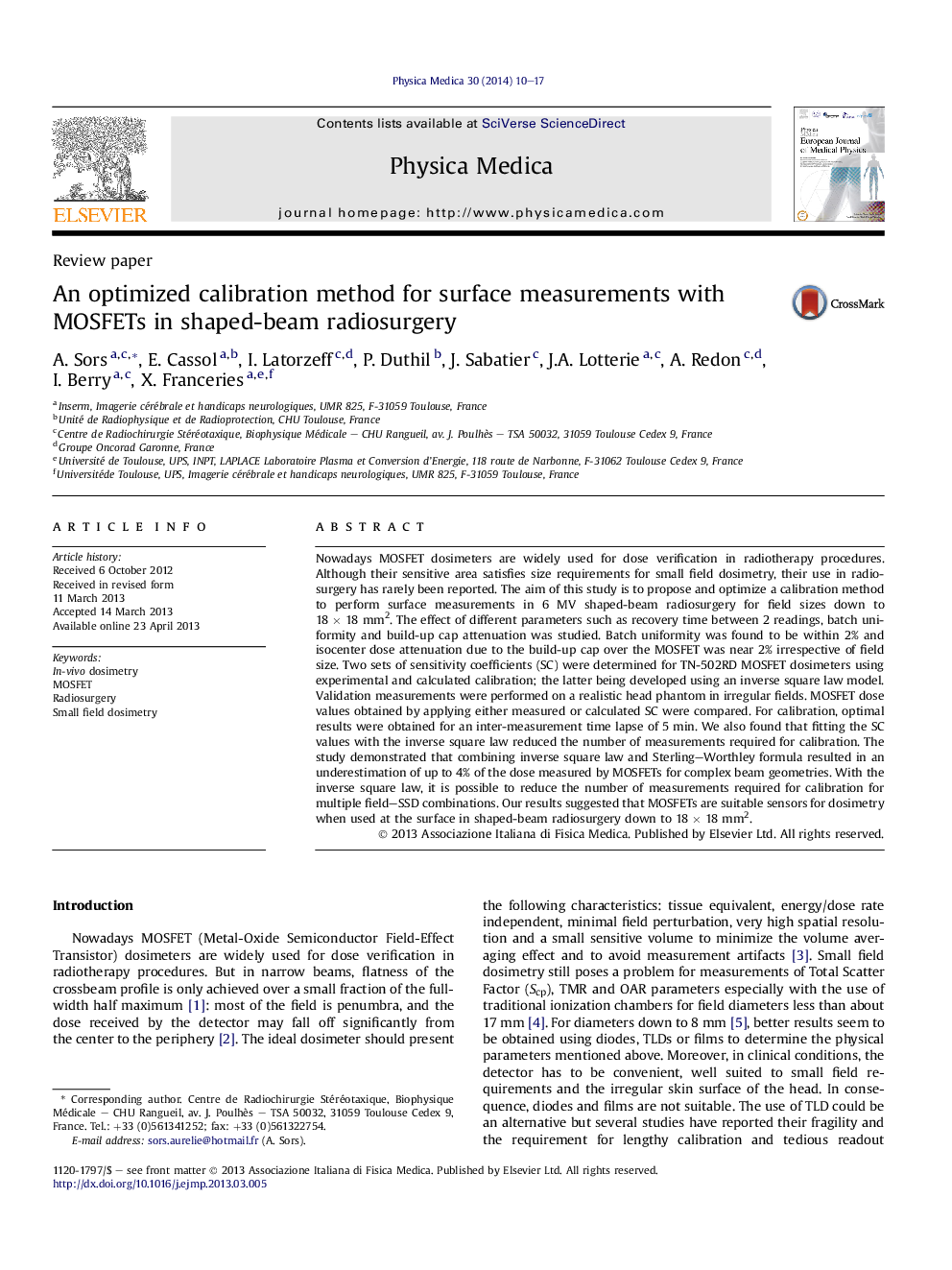| Article ID | Journal | Published Year | Pages | File Type |
|---|---|---|---|---|
| 1882494 | Physica Medica | 2014 | 8 Pages |
Nowadays MOSFET dosimeters are widely used for dose verification in radiotherapy procedures. Although their sensitive area satisfies size requirements for small field dosimetry, their use in radiosurgery has rarely been reported. The aim of this study is to propose and optimize a calibration method to perform surface measurements in 6 MV shaped-beam radiosurgery for field sizes down to 18 × 18 mm2. The effect of different parameters such as recovery time between 2 readings, batch uniformity and build-up cap attenuation was studied. Batch uniformity was found to be within 2% and isocenter dose attenuation due to the build-up cap over the MOSFET was near 2% irrespective of field size. Two sets of sensitivity coefficients (SC) were determined for TN-502RD MOSFET dosimeters using experimental and calculated calibration; the latter being developed using an inverse square law model. Validation measurements were performed on a realistic head phantom in irregular fields. MOSFET dose values obtained by applying either measured or calculated SC were compared. For calibration, optimal results were obtained for an inter-measurement time lapse of 5 min. We also found that fitting the SC values with the inverse square law reduced the number of measurements required for calibration. The study demonstrated that combining inverse square law and Sterling–Worthley formula resulted in an underestimation of up to 4% of the dose measured by MOSFETs for complex beam geometries. With the inverse square law, it is possible to reduce the number of measurements required for calibration for multiple field–SSD combinations. Our results suggested that MOSFETs are suitable sensors for dosimetry when used at the surface in shaped-beam radiosurgery down to 18 × 18 mm2.
